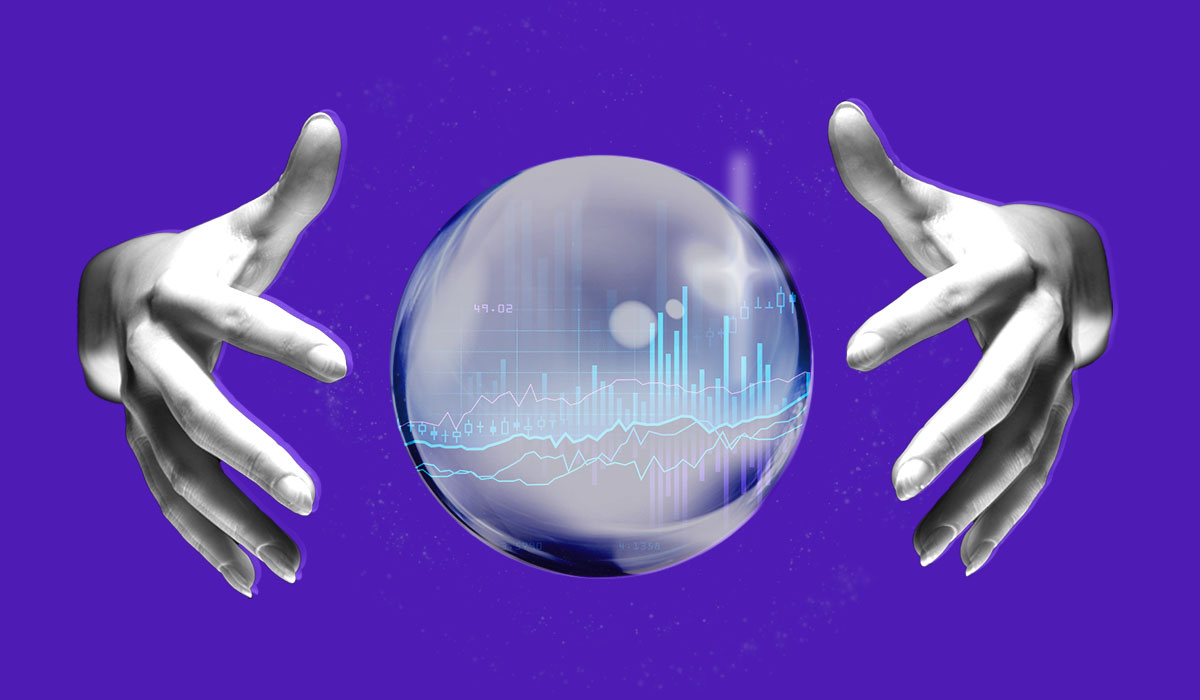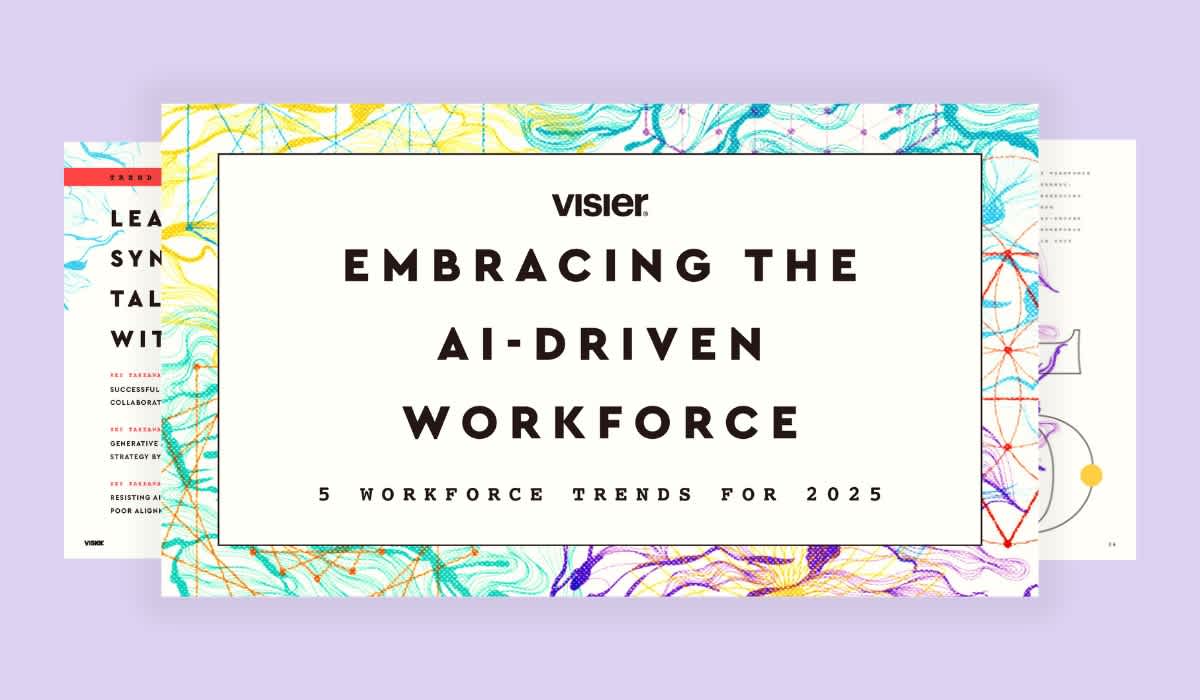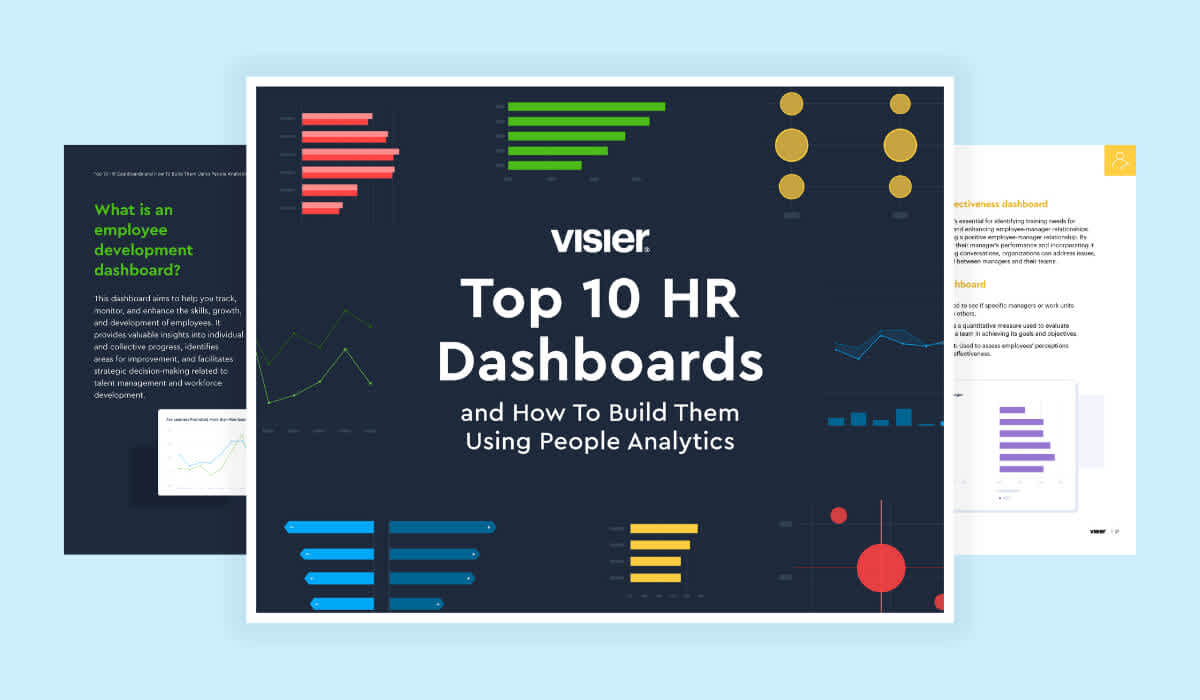Predictive HR Analytics: What It Is and How To Use It
Predictive HR analytics let you make predictions and forecasts about future performance based on historical HR data. Learn more.

Predictive HR analytics is used to analyze historical data to make predictions about the future. It shouldn’t be confused with standard HR analytics.
With the latter, data is collected and analyzed to see what’s working and what isn’t, and where you can improve. With the former, data is collected with the goal of making predictions about employees or HR trends.
What type of predictions can be made? Some examples include:
Which employees are more likely to quit within a certain timeframe?
Which candidates will be the most successful?
Which new employees will be top performers?
Do you want to learn how to use predictive HR analytics? Then this article is for you. We’ll talk about the benefits this type of analytics has, how it can be applied, examples, and more.

Why should HR leaders care about predictive HR analytics?
Predictive HR analytics has many benefits. It can help you:
Improve recruitment practices
Reduce voluntary turnover rates
Achieve optimal performance
Reduce costs that come from resignations and new hires, or human errors
Create an employee profile that will show you who will thrive in your company and who won’t
With standard analytics, you’re looking at past problems. You’re analyzing them in an attempt to fix them and avoid them in the future.
With predictive analytics, you’re taking a more proactive approach. You’re analyzing data to understand where problems may appear in the future. You’re attempting to correct things before these problems materialize.
How can I apply predictive HR analytics?
Predictive HR analytics has many benefits, but how does it work in practice? Each company has a lot of HR data. The bigger the company, the more data there is. But research shows only about 17% of organizations worldwide use HR data to optimize their processes. That sounds like a pretty big waste, wouldn’t you agree?
With predictive analysis, you use this data in an effective way. HR can create predictive models that can be then used to make data-driven decisions. It will no longer operate on instinct, soft science, or lessons learned from past mistakes.
Along with people analytics or HR metrics, predictive analytics allows HR to take the best decisions that reduce turnover, improve employee engagement, and more.
Despite the myths, predictive analysis does not replace human intervention, and it’s not all about predicting the future. It is also about how people interact with the company, or how ready they are to promote versus the time they wait for a promotion.
Let’s look at a few examples.

4 examples of predictive analytics
As mentioned, predictive HR analytics comes in a variety of forms. Four common use cases include:
Predicting voluntary employee turnover
Improving the recruitment process by predicting hiring success
Predicting revenue with engagement data
Improving performance
Let’s dig into each example now.
1. Predicting voluntary employee turnover
Turnover is any manager’s nightmare. It can stall projects and cause a loss of revenue.
Did you know that the cost of replacing someone new is about 150% of their annual salary? And that’s for mid-level employees. For the high-level ones, costs can go up to 400%. It makes sense you’d want to prevent all that.
With predictive HR analytics, you can create models that will help you forecast when an employee is most likely to quit.
You may also see which employees are at the highest risk of attrition. Are people in one department more at risk than others? Do demographics play a role in it? Predictive analytics can help you understand, predict, and prevent all this.
2. Improving the recruitment process by predicting hiring success
Hiring is another area that can generate huge costs. The main culprits include an inefficient recruitment process and bad hires. Often, these issues depend on one another.
Predictive HR analytics can come to the rescue. With the right algorithms in place, you can optimize the hiring process and predict hiring success.
Which candidates are more likely to succeed in the long term? Who is more likely to become a top performer? Predictive analytics can help you answer these questions.
3. Predicting revenue with engagement data
Engagement is a magic word for business success. Engaged employees perform better, have lower absenteeism and turnover rates, and are happier at their jobs.
With that in mind, you can use engagement data to predict your revenue. Look at how employee engagement is impacting your sales. From there, you can use this data to estimate your future revenue.
Depending on the type of company, it may be easier to use engagement data to predict performance and productivity. Regardless of what you are tracking, the result is more or less the same. Predictive analytics will allow you to forecast how well your business will do within a specific timeframe.
4. Improving performance
Data about past performance can show you where and why problems appeared. Through predictive HR analytics, you can take it one step further. You can see what initiatives could help improve performance and how to apply them.

4 ways predictive analytics can improve your HR strategy
Predictive analytics can help improve your HR strategy in a variety of ways, including:
Creating a more effective payroll system
Enabling better risk management
Improving retention strategies
Reducing post-turnover problems
Here’s how.
1. Create a more effective payroll system
Payroll systems can sometimes get unnecessarily complicated. Ineffective bonus strategies or issues with employees can create problems.
A simple, yet effective predictive analysis can help prevent these issues. It can make the payroll system more effective, thus saving resources and revenue.
2. Better risk management
Any business faces certain risks. How you manage them can make the difference between success and failure. Whether we’re talking about security risks, external, or internal threats, you need to be one step ahead.
Predictive HR analytics may not address all the risks you face. It might not tell you when and where a hacker will strike. But it can help address many other risks.
For instance, you can forecast when and which employees will need training. By predicting a critical situation so that you can avoid it altogether.
3. Improved retention strategies
We already mentioned how important it is to reduce voluntary turnover rates. Retention strategies are how you achieve that. But they aren’t always the easiest to craft.
People are different. What one person likes, another one might dislike. And you might want both of them to stay in your company. So how can you design a retention strategy that is inclusive and appealing to all? Through predictive HR analytics.
With the correct data at hand, the HR team can revise its retention strategies. They can choose those methods that will keep all employees happy and will minimize turnover.
4. Reduce post-turnover problems
No matter how good your retention strategies are, you will sometimes have employees who resign.
Maybe it’s for reasons that have nothing to do with your company, like moving to a different city or country. Or maybe they simply want something different.
Whatever the reason, turnover will not make you happy. Plus, replacing the lost employees will cost you money.
Since you can’t always prevent turnover, the best you can do is to mitigate the problems it comes with. A data-driven approach through predictive analytics can help. With a predictive model, you can filter data like employee engagement, commute time, performance, and more.
This can help human resources better understand which employees are more likely to quit and when, and what variables (preventable or unpreventable) cause that attrition. By knowing that, you can avoid situations when you need to hire fast and in a panic.

Key takeaways
Predictive HR analytics is an effective way to use HR data. Unlike standard analytics, predictive analysis allows you to make forecasts about various situations.
You’re not looking at data only to see mistakes that were made and understand how to correct them. You’re trying to see what can happen and how to take advantage of it.
A few areas where predictive HR analytics can help include:
Reducing voluntary turnover
Improving performance
Improving recruitment strategy
Managing risks
In short, predictive HR analytics is a smart way to use data and create models that help you reach your goals.
Predictive HR analytics FAQ
What is predictive HR analytics?
Predictive HR analytics is a process where companies analyze and present human resources and recruiting data to forecast future outcomes, and meet future goals. Using predictive analytics tools, companies, and HR departments can source, analyze, and categorize HR data, helping them identify patterns and insights that inform future decisions.
What are examples of predictive HR analytics?
Examples of predictive HR analytics include predicting voluntary employee turnover, auditing and optimizing the recruitment process, predicting revenue through engagement data, and analyzing and improving employee performance.
What are the benefits of predictive HR analytics?
Four key benefits of predictive HR analytics include:
A more effective payroll system
Better risk management
Improved employee retention strategies
Reduced post-turnover problems
Predictive analytics for HR
Forecasting and prediction techniques can help you understand where your business is headed, how likely you are to reach your goals, and take action. Here's how HR teams can apply them.
Visier People uses predictive people analytics that are up to 17 times more accurate than guesswork at predicting risk of exit, and movement.
Predicting time-to-fill for a job is crucial in talent acquisition. Dave Weisbeck explains how Visier uses predictive analytics to do so.



